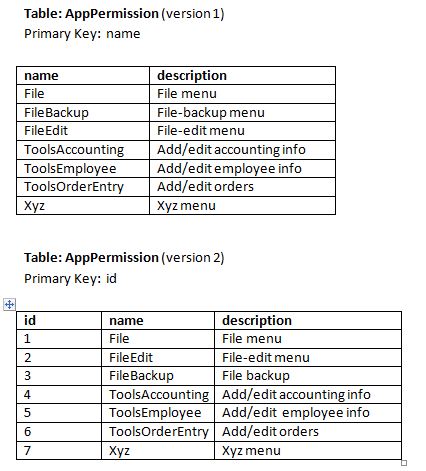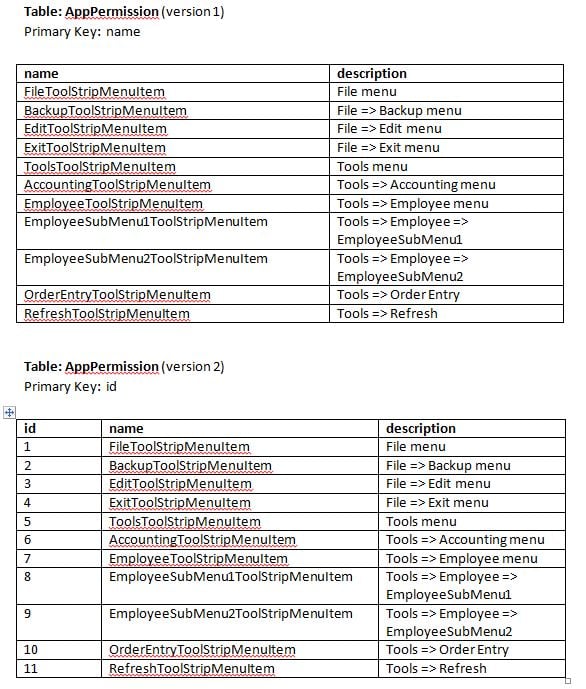Hi everyone!
I'm making an application which requires users with different permissions/previleges to login and use the application.For example, if the user is "admin", all menu items in the menu bar are shown and enabled. If the user is say "user_group1", some of the menu items are to be hidden. The same for "user_group2", "user_group3", "user_group4" and so on.
I could put a code for each specific user in each form but that's a great deal since users and their user groups may be added after application deployment. So it has to be something flexible.
I want the user "Administrator" to be able to assign/change permissions to others users of the system.
How do I do this?
I have been thinking of creating a table that will include user_groups and permisions, say like a row: user_group (user_group1, user_group2,user_group3) and permission (File,Edit,Backup,Manage Users (these being menu items)) and then for each user I will be setting either "Yes" or "No" under each permission/menu item indicating that the menu item is to be hidden of shown.
But, I can read these permission to a dataset but I can't see how to link them with the menu items.
How should I accomplish this please?




















